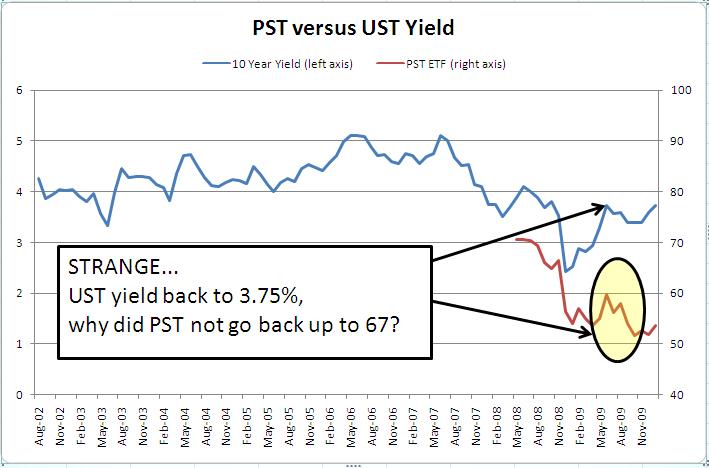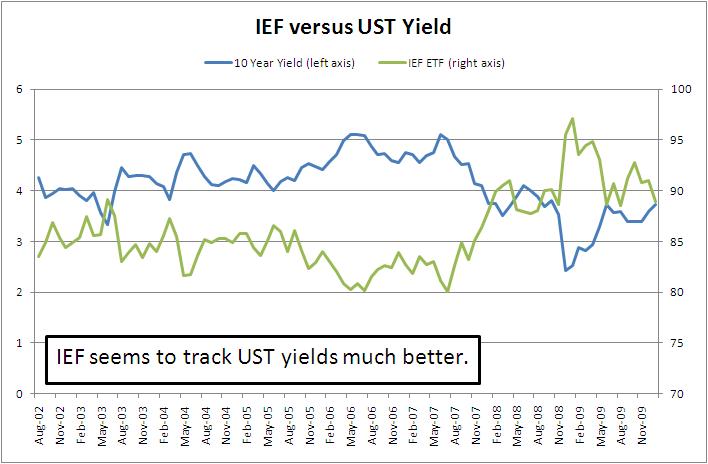As the US government continues to issue record levels of debt, I don't think it can continue to sell that debt at 2 - 3% interest. It will face the simple supply/demand law of economics — the more supply of an item, the less valuable each item is and thus the price of the item goes down. Or, in other words, the US government will have to raise interest rates on debt in order to attract new customers.
Yields on the USTs may go a little lower but not much more. During the crisis they dropped as low as 2.08% and are now at 2.5% (on 10 yrs). Therefore, I think shorting USTs sometime in the next year is a fairly safe bet.
My guess is that in the April/May time frame the rates on USTs will start to rise as the government must find new customers and the FED will hopefully have stopped buying government debt thus slowing down their money printing (this is not a sure thing, however).
So I was researching an ETF that shorted USTs and found PST. It is supposed to return 2X the inverse of 10 year UST prices. I started charting it out and saw something strange. Take a look at the chart below:

PST goes down when yields go down but it does not proportionally go back up when yields go back up. Strange.
So then I looked at an ETF that tracked 10 year USTs prices (a bull ETF - not a short). I looked at IEF — an ETF that tracks prices on 10 year USTs. See the chart below:

IEF does a much better job of tracking the 10 year UST prices. I still don't understand why PST does such a poor job of shorting USTs. It seems like I'm better off shorting IEF instead of buying PST.
Is there a better way to short treasuries? Does anyone know why the short ETFs do such a poor job?
